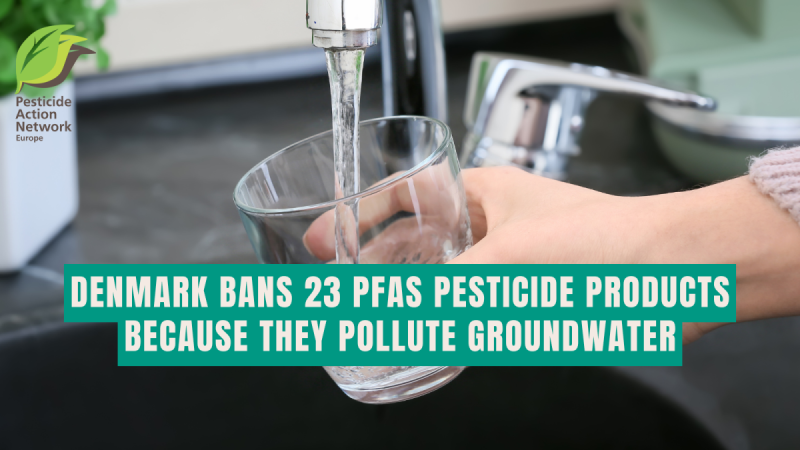We welcome the decision of the Danish Environmental Protection Agency to withdraw the authorisation of 23 PFAS pesticides that can form and leach trifluoroacetic acid (TFA) into groundwater. This very persistent, very mobile and reprotoxic PFAS is a huge threat to our drinking water. The Danish decision should serve as a model for all other EU Member States and should encourage the European Commission to propose a swift ban on all active substances that produce TFA.
Pesticides authorised for use must not pose a risk to the groundwater according to the EU pesticide law. More specifically, active substances and their breakdown products with a toxicological profile considered harmful, such as TFA, must not contaminate groundwater above the legal threshold of 0.1µg/L. Without waiting for EU action, Member States are legally required to ensure compliance with this requirement and take regulatory action if it is breached.
This is in that context that the Danish Environmental Protection Agency has reviewed the authorisation granted to six PFAS active substances that are used in 33 pesticide products. This decision is based on conclusions of the “TriFluPest” project carried out by the National Geological Surveys for Denmark & Greenland (GEUS) [1]. The latter investigated and demonstrated the TFA formation from the seven most widely used PFAS active substances in Denmark and the risk of groundwater contamination under typical agricultural application conditions. For some substances, EPA reassessment is also based on information on ongoing renewal assessment dossiers.
This process has now resulted in the decision to withdraw the approval of 23 pesticide products containing 6 PFAS active substances: fluazinam, fluopyram, diflufenican, mefentrifluconazole, tau fluvalinate and flonicamid. The process is still ongoing for the ten other products and a decision is expected in August or September, according to the EPA. In recent years, TFA has been found in surface, groundwater and drinking water. This is measured in different EU countries like Denmark, Sweden, the Netherlands, Germany and Belgium. The rising TFA pollution of water and also wine, and cereals all over Europe was shown in several PAN Europe reports. Research from the German UmweltBundesAmt (UBA) shows that in agricultural areas, PFAS pesticides are the main source of TFA in rural areas [2]. Other sources are refrigerants and propellants in spray cans, which contribute to TFA being found in rainwater.
The EU’s risk assessments for pesticides have not previously included information about TFA. The Danish research project from GEUS, compared with new assessments from the EU, has now shown that TFA is formed from the above active substances and leaches into groundwater.
Salomé Roynel from PAN Europe says: “The EU law is clear. Article 44 of Regulation 1107 says that EU Member States must review and withdraw pesticide products from the market if there is evidence that they don’t meet the requirements. So other Member States should follow the Danish example and swiftly ban all PFAS pesticides to protect groundwater."
The decisions mean that the use of a number of pesticides containing one of the active substances is prohibited in six months and 15 months respectively.
Producers fear that starch potato production in particular will be affected. They are used as potato flour in a wide range of products in the food industry. However, pollution of groundwater with a toxic forever chemical should be a no-go in all countries.
The specific settlement deadlines for the Danish decisions can be found here.
See the PAN Europe Reports on TFA here.
[1] TriFluPest - Miljøstyrelsen
[2] Trifluoroacetate (TFA): Laying the foundations for effective mitigation | Umweltbundesamt
